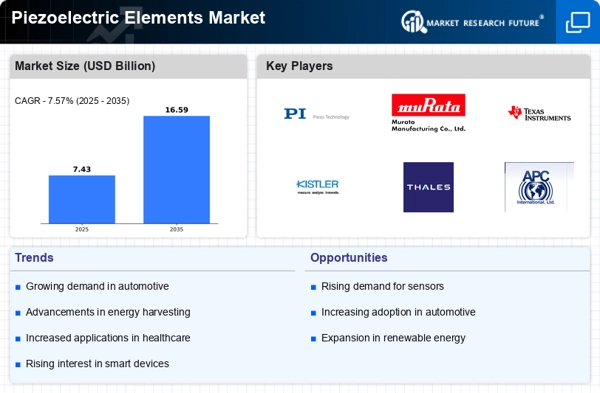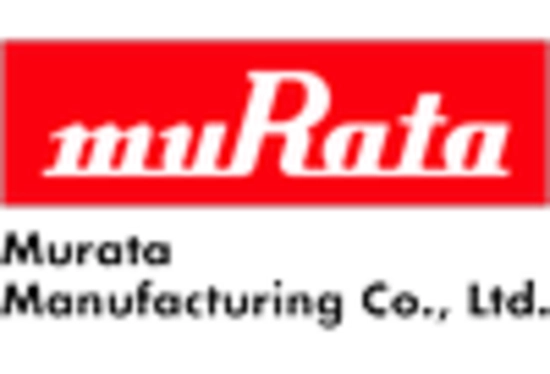The Piezoelectric Elements Market is currently characterized by a dynamic competitive landscape, driven by technological advancements and increasing applications across various sectors, including automotive, healthcare, and consumer electronics. Key players such as PI Ceramic GmbH (Germany), Murata Manufacturing Co., Ltd. (Japan), and Kistler Group (Switzerland) are strategically positioning themselves through innovation and regional expansion. For instance, PI Ceramic GmbH focuses on enhancing its product portfolio with advanced piezoelectric materials, while Murata Manufacturing Co., Ltd. emphasizes partnerships to bolster its market presence in Asia. These strategies collectively contribute to a moderately fragmented market structure, where competition is intensifying as companies seek to differentiate themselves through technological superiority and customer-centric solutions.
In terms of business tactics, companies are increasingly localizing manufacturing to reduce lead times and optimize supply chains. This approach not only enhances operational efficiency but also allows for better responsiveness to regional market demands. The competitive structure of the Piezoelectric Elements Market appears to be moderately fragmented, with several key players exerting influence through innovative product offerings and strategic collaborations. The collective efforts of these companies are likely to shape the market dynamics, fostering an environment where agility and adaptability are paramount.
In August 2025, Kistler Group (Switzerland) announced the launch of a new line of piezoelectric sensors designed for high-precision applications in the automotive sector. This strategic move underscores Kistler's commitment to innovation and positions the company to capture a larger share of the growing automotive market, which increasingly demands advanced sensing technologies. The introduction of these sensors is expected to enhance vehicle performance and safety, thereby reinforcing Kistler's competitive edge.
In September 2025, Murata Manufacturing Co., Ltd. (Japan) expanded its collaboration with a leading automotive manufacturer to integrate piezoelectric elements into next-generation electric vehicles. This partnership is indicative of Murata's strategy to leverage its technological expertise in piezoelectric materials, aligning with the automotive industry's shift towards electrification. Such collaborations not only enhance product offerings but also solidify Murata's position as a key player in the evolving automotive landscape.
In October 2025, CeramTec GmbH (Germany) unveiled a new sustainability initiative aimed at reducing the environmental impact of its piezoelectric products. This initiative reflects a growing trend among manufacturers to prioritize sustainability in their operations. By adopting eco-friendly practices, CeramTec is likely to appeal to environmentally conscious consumers and businesses, thereby enhancing its market reputation and competitiveness.
As of October 2025, the Piezoelectric Elements Market is witnessing significant trends such as digitalization, sustainability, and the integration of artificial intelligence. These trends are reshaping competitive dynamics, with companies increasingly forming strategic alliances to enhance their technological capabilities and market reach. The shift from price-based competition to a focus on innovation, technology, and supply chain reliability is becoming evident. Moving forward, competitive differentiation will likely hinge on the ability to innovate and adapt to changing market demands, positioning companies to thrive in an increasingly complex landscape.

















Leave a Comment